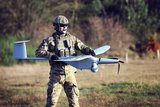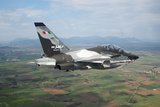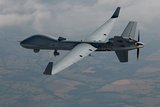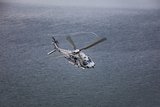Turkish Navy receives the first domestically produced Aksungur UAV
ANKA-AKSUNGUR is powered by two PD-170 twin-turbocharged diesel engines enabling long endurance operations up to 40,000ft. (Photo: Turkish Aerospace Industries)
The Turkish Navy received the first domestically produced MALE UAV, Aksungur, on 20 October.
The UAV is the latest combat drone from Turkish Aerospace Industries (TAI). It can fly for 50h, carry up to 750kg of payload and is capable of long-endurance operations at an altitude of up to 40,000ft.
Aksungur can perform uninterrupted multi-role intelligence, surveillance, reconnaissance and attack missions with its high payload capacity and provide BLoS operational flexibility with its SATCOM payload.
The platform’s maiden flight was completed in Match 2019 and it was first publicly revealed at IDEF 2019 in Istanbul.
TAI funded the development of UAV alone, with the expectation to receive orders from the Turkish Armed Forces as the military were involved in the Aksungur’s development.
The contract was received following the first flight and the platform entered into mass production in December 2020.
Four Aksungurs will be delivered to the Turkish Armed Forces by the end of 2021, with this delivery marking the first in the series.
Related Equipment in Defence Insight
More from Air Warfare
-
![Portugal signals interest in establishing A-29N final assembly line]()
Portugal signals interest in establishing A-29N final assembly line
As the launch customer for the NATO-configured variant, Portugal also took delivery of the first five A-29N aircraft from its order for 12, placed in 2024.
-
![Leonardo signs contract on Austria’s M-346 aircraft order]()
Leonardo signs contract on Austria’s M-346 aircraft order
The first of the 12 M-346 aircraft are expected to be delivered to the Austrian Air Force by 2028, according to the company.
-
![2025 UAV market review: $7.8 billion in new contracts signed as US leads spending]()
2025 UAV market review: $7.8 billion in new contracts signed as US leads spending
Qatar and Indonesia followed the US’s high spending on new uncrewed aerial vehicle contracts across 2025, while MALE and micro drones and loitering munitions were particularly popular subcategories this year.
-
![German Navy in “ramp-up” phase as it welcomes first NH90 Sea Tiger delivery]()
German Navy in “ramp-up” phase as it welcomes first NH90 Sea Tiger delivery
With all 31 aircraft set to be delivered by 2030, the helicopters will gradually replace the ageing Sea Lynx fleet which are due to be retired in 2026.






















